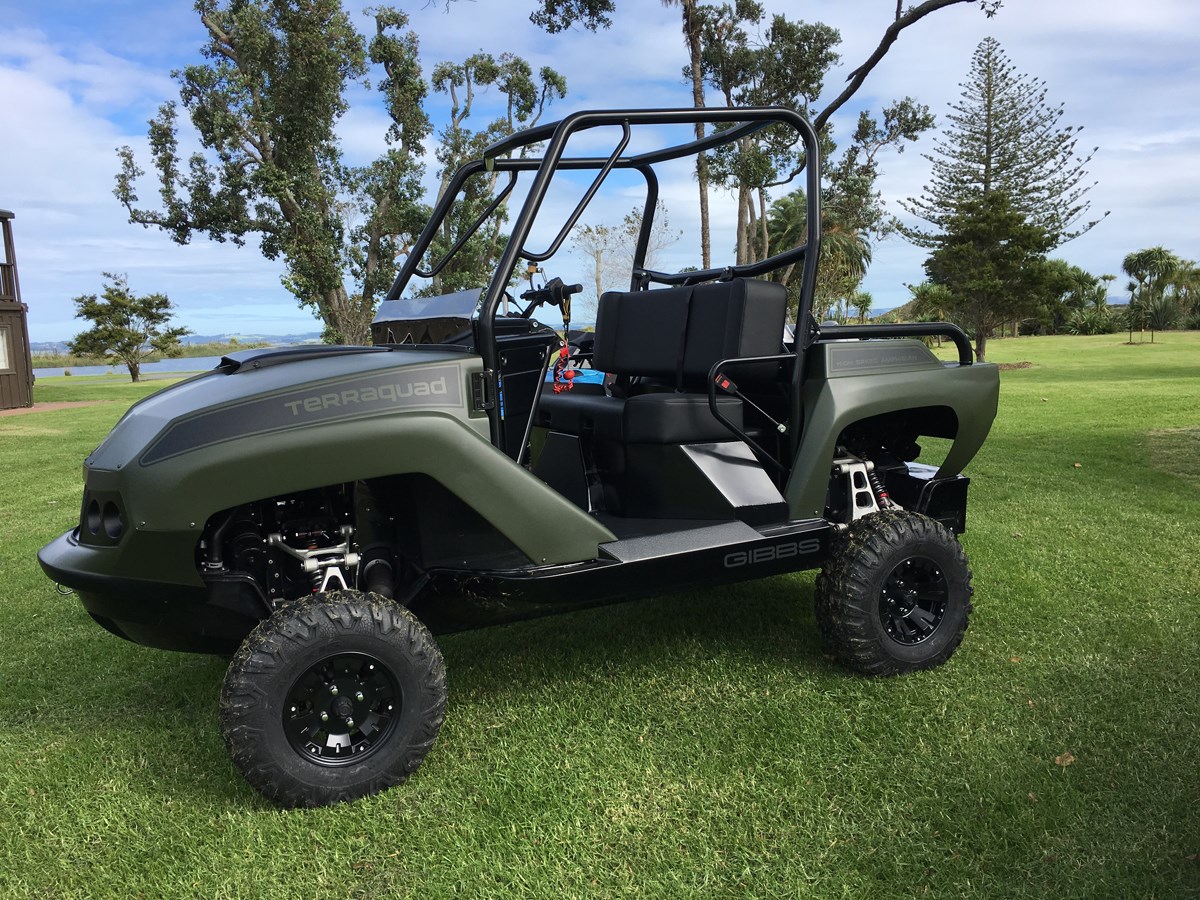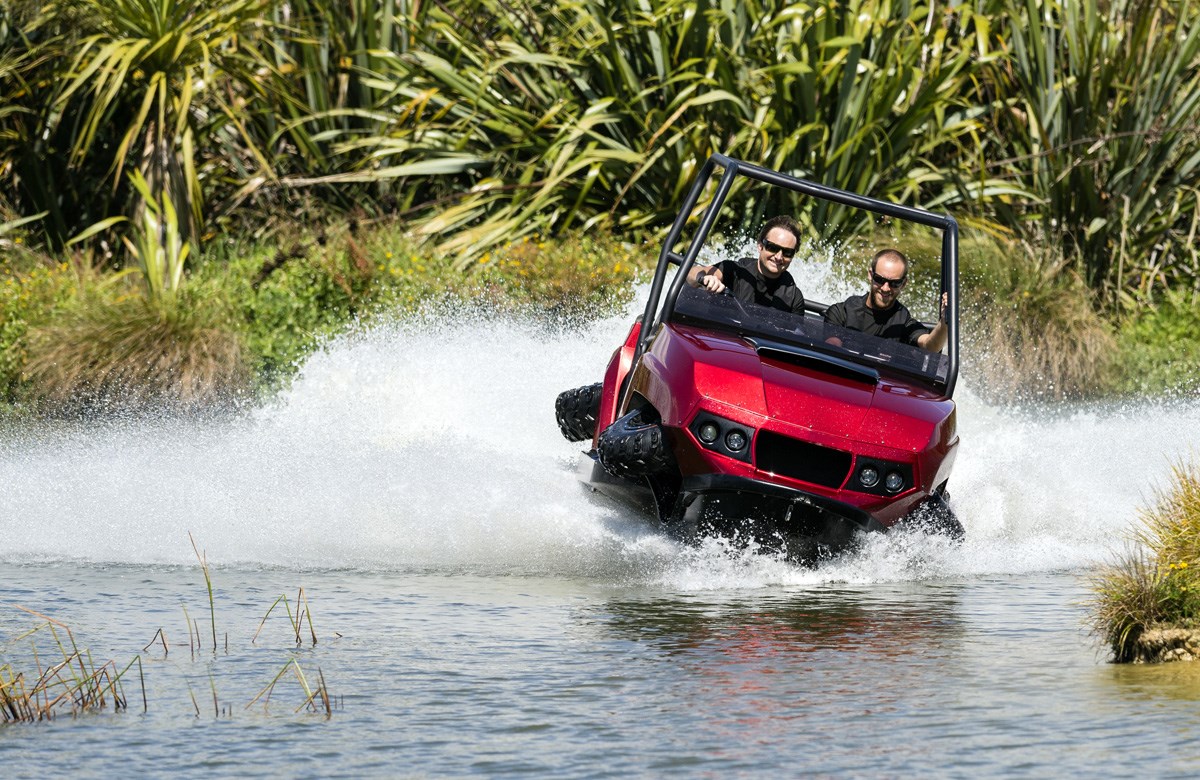There is a farm just off Highway 16 on the Kaipara Harbour that is well known to many passers-by as a beautiful property stocked with sculptures by some of the world's best artists -- as well as 31 animal breeds, many exotic.
The property is owned by New Zealand entrepreneur and philanthropist Alan Gibbs and, on many days of the year, he opens the gates to the 404-hectare farm to charities and institutions to raise funds.
I was fortunate to spend much of a day in Gibbs' company discussing not business or art but his enthusiasm for high-speed amphibious vehicles.
A small collection was on hand for me to do some serious testing but it is difficult to be objective when you have a huge smile on your face while bouncing along tiny farm tracks at 80km/h before plunging headlong into the waters of a lake, wheels up and within 5 seconds, skimming along those waters at 70km/h.
Amphibious vehicles have been around for ages, with the first documented versions appearing in the early 1800s. However, these were mainly hybrid concoctions of either a boat with wheels or tracks attached or a land based-vehicle with floats -- and they were notoriously slow in the water.
More recently, the German-built Amphicar became fashionable and the American-built Watercar is still in limited production -- but the former could achieve only around 12km/h on water and the latter, though much faster, has found a small market in the Middle East with prices around the NZ$200,000 mark.
The breakthrough in innovative design and engineering that revolutionised the amphibious vehicle scene came with the development of the Gibbs sophisticated hydraulic suspension, combined with a patented clutch to decouple and raise the wheels when the vehicle goes in the water.

This system allowed the development of water-borne vehicles, previously ponderous, to become aquatic sports cars, powerful enough to easily tow a water skier.
All this sounds easy, but no organisation had been able to successfully come up with a workable solution, until Gibbs came along.
From the earliest beginnings with the Aquada -- a sleek sportscar style of three seats, fast and legal on both the road and the water, released in 2003 -- Gibbs Amphibians has concentrated on innovation and performance at competitive pricing.
With the range of models now including a truck and a motorcycle, it was the Sports Amphibians that were of interest to me. (But one could not ignore the still beautiful lines of the original Aquada; and to experience the transition from driving, road legal, at 100km/h to 65km/h on the water was surreal.)
The Terraquad has side-by- seating, roof bars, and a rear load deck, similar in concept to a typical UTV (Utility Terrain Vehicle) and is powered by a water-cooled BMW K1300cc four cylinder engine that produces 105kW.
A flick of the switch on transition from the land to water sees the four wheels tuck up out of the way using the Gibbs "HSA" technology, refined over more than two decades and untold man hours.
 As the wheels retract, the land drive is automatically decoupled and three seconds later the vehicle is now on the plane thanks to the Gibbs-designed water jet propulsion system and feeling much like a high-speed jetski.
As the wheels retract, the land drive is automatically decoupled and three seconds later the vehicle is now on the plane thanks to the Gibbs-designed water jet propulsion system and feeling much like a high-speed jetski.
With research and development centres in New Zealand and the UK, Gibbs Amphibians is forging ahead with this technology and the many derivatives that it enables.
From the smallest vehicle in the range, the Biski (a motorcycle that becomes a jetski, or perhaps a jetski that becomes a road legal motorcycle) that can travel at speeds up to 140km/h, to the 7m-long 225kW diesel powered Humdinga amphitruck, it seems there is nothing that this go-anywhere technology is not capable of.
A yet larger derivative of the Humdinga is the Phibian. At 9.2m long, it is still capable of 115km/h on land and more than 50km/h on water, and was designed with disaster relief and rescues in mind. It is also effective as a police in-shore patrol vessel.
The Phibian can achieve more on land and water than a 1500kg payload 4WD truck, towing a heavy trailer carrying high-speed 10m-long boat.
As testing and development manager Matt Houston says from his Auckland base: "With the Terraquad we've developed an incredibly versatile vehicle. It has already generated huge interest from all around the world for a wide variety of applications."




